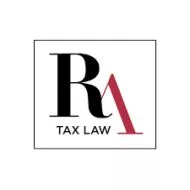Navigating the intricate realm of taxes can be intimidating for young adults and students in Canada. However, comprehending tax obligations is a pivotal stride toward financial literacy.
Income taxes, a percentage of earnings owed to provincial and federal governments, play a critical role in supporting essential social services, such as healthcare and education. Canada operates under a progressive tax system, wherein a higher income corresponds to higher taxes. However, the first $15,000 earned is tax-exempt, termed the basic personal amount. If income is earned abroad, it must be reported, although Canada's tax treaties with over 90 countries serve to prevent the risk of double taxation.
It is essential to understand the rules and regulations, including reporting income earned both in Canada and abroad.
Why Do Young Adults and Students Need to File Taxes?
Even where income is below the basic personal amount or there is no income at all, filing taxes is crucial. It facilitates access to benefits like the Goods and Services Tax/Harmonized Sales Tax (GST/HST) credit and Canada Child Benefit. Filing also builds RRSP contribution room and fosters good financial habits.
How are Taxes Calculated?
In order to gain employment in Canada, individuals must have a Social Insurance Number (SIN) which ties them to the country's identity. Employers provide details regarding annual income to both the individual and the Canada Revenue Agency (CRA). Using this information, individuals must file their taxes with the CRA, indicating all earnings, and confirming or updating information they have to determine what credits and benefits they may be entitled to, as well as to ensure appropriate tax withholdings or additional tax owing.
Taxable income encompasses employment income, dividends (or earnings paid out by a company you invest in), rental income, interest (on an investment or bank account savings), and RRSP withdrawals. Certain income, such as lottery winnings, gifts, inheritances, school scholarships and Canada Child Benefit payments are exempt from taxation.
The CRA uses a self-assessment tax system, meaning it is up to the Taxpayer to accurately report and file their taxes. However, careless or negligent filing can prompt audits by the CRA, which has no limitation on how far back it can investigate. Thus, it is advisable to establish an online CRA account for secure and long-term record-keeping.
How can you reduce income taxes?
No one likes paying taxes, however, there are plenty of legal strategies that can be applied to reduce income taxes. Some of the most common ways to reduce income taxes in Canada include:
- Tuition Tax Credit: If you are pursuing post-secondary education, your tuition and fees can be claimed as a tax credit, which can be directly deducted from your income. This applies to tuition for university, trade school and other eligible training programs.
- TFSA: A tax-free savings account (TFSA) offers tax-free growth on savings. Unlike other types of investment accounts, you do not have to pay taxes on the money you make through a TFSA, and similarly do not have to pay taxes on withdrawals.
- RRSP Contributions: A Registered Retirement Savings Plan (RRSP) is a popular method amongst Canadians to save money while concurrently reducing taxable income. Annually, the CRA permits individuals to allocate a specific amount to their RRSP, which can then be deducted from their total income. However, it's crucial to note that taxes are applicable upon withdrawal. While RRSPs are a valuable resource, their complexity and potential penalties necessitate professional assistance to ensure correct utilization.
- Leveraging Eligible Expenses: Understanding available deductions in your tax returns is crucial. Whether you operate as a self-employed individual, engage in part-time work, or pursue supplementary ventures such as crafting, you possess the opportunity to deduct a spectrum of work-related expenses. These may encompass expenditures for materials, marketing, and a segment of your phone/internet bills. Additionally, in situations where remote work or relocation for professional or educational pursuits is involved, leveraging deductions for home office expenditures, or moving expenses can markedly reduce your taxable income. Skillfully understanding and harnessing these deductions can yield a significant impact on mitigating your overall tax liability.
Filing Process for Students
One of the most effective strategies to optimize savings on income tax is to engage the services of a knowledgeable tax professional well-versed in the intricacies of tax deductions, expenses, and eligible tax credits applicable in any given fiscal year. Furthermore, certain educational institutions provide complimentary Tax Clinics to assist students in fulfilling their tax obligations.
If such resources are not available, there are several simple and tax-free software available. However, please be cautious before inputting confidential information due to the rise of and risks associated with data breaches.
Stay vigilant about crucial deadlines; for most students, the tax return must be submitted by April 30th.
Conclusion
Filing taxes may seem overwhelming, but it is a crucial aspect of financial responsibility for young adults and students in Canada. By understanding your tax obligations, leveraging applicable credits and deductions, and adopting sound financial practices, you can navigate tax season with confidence and set yourself on a path towards financial success. Remember, seeking advice from tax professionals or using tax software can streamline the process and ensure accurate filing. After all, knowledge is power.
The content of this article is intended to provide a general guide to the subject matter. Specialist advice should be sought about your specific circumstances.


